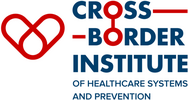CHARE-GD I Subproject 1: Cross-Border Health Data Compass as a Basis for Comparative Studies
PIs: Prof. Dr. Andreas Hein, Prof. Dr. Mark Schweda, Prof. Dr. Jochen Mierau, Prof. Dr. Viola Angelini, Dr. Tobias Vogt
For other languages, see Deutsch and Nederlands.

About the project
The quality and availability of patient care in the healthcare system in both Germany and the Netherlands varies from region to region. These regional differences in care, together with demographic, socio-economic and natural conditions, overlap with the organisation of two different national healthcare systems to form a complex overall situation. Are there differences in the quality of healthcare between rural and urban regions in the two countries? What is the potential of cross-border care for underserved areas? In order for researchers to answer these and other questions, small-scale data and suitable methods are required. The project aims to lay these foundations.


